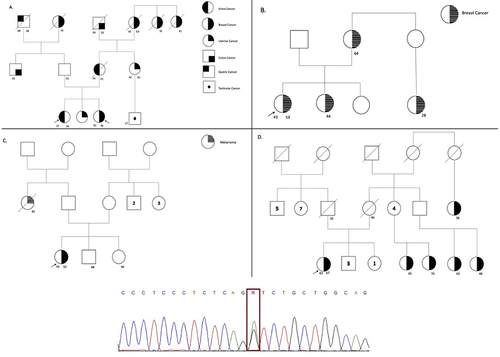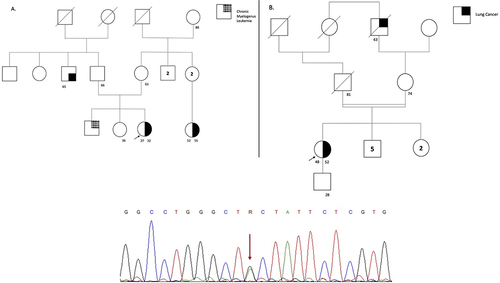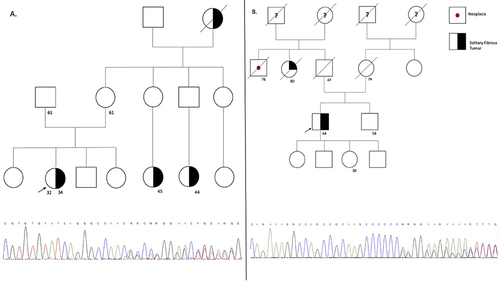Figures & data
Table 1 Demographics, Clinical Presentation and Associated Variants
Figure 1 The figure represents the pedigree of each participant, which is correlate in . The symbols for each neoplasia type are stated (A) on the right side for (A–D). The arrow represents the proband, the line crossing the symbol represents the dead status, the unique number represent current age, and symbols with two numbers represent the current age and age of diagnosis. On the bottom of the figure the sanger sequencing showing the variant encoding the MUTYH gene for all the families is stated.

Figure 2 The figure represents the pedigree of each participant, which is correlate in . The symbols for each neoplasia type are stated (A and B) on the right side. The arrow represents the proband, the line crossing the symbol represents the dead status, the unique number represent current age, and symbols with two numbers represent the current age and age of diagnosis. On the bottom of the figure the sanger sequencing showing the variant encoding the MUTYH gene for all the families is stated.

Figure 3 The figure represents the pedigree of each participant, which is correlate in . The symbols for each neoplasia type are stated (B) on the right side for (A and B). The arrow represents the proband, the line crossing the symbol represents the dead status, the unique number represent current age, and symbols with two numbers represent the current age and age of diagnosis. On the bottom of the figure the sanger sequencing showing the variant encoding the MUTYH gene for all the families is stated.

Figure 4 The figure represents the pedigree of each participant, which is correlate in . The symbols for each neoplasia type are stated (B) on the right side for (A and B). The arrow represents the proband, the line crossing the symbol represents the dead status, the unique number represent current age, and symbols with two numbers represent the current age and age of diagnosis. On the bottom of the figure the sanger sequencing showing the variant encoding the MUTYH gene for all the families is stated.

